| Srl | Item |
| 1 |
ID:
105902
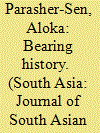

|
|
|
|
|
| Publication |
2011.
|
| Summary/Abstract |
The largely-prescriptive Jaina literary texts contained severe strictures on women that forbade them from undertaking sallekhana- (fasting to death) to attain spiritual liberation. However, fragmentary inscriptions written on stone slabs and pillars found in the Deccan indicate that women did undertake and experience this ritual practice. These records, written at the behest of those who took care of individuals going through sallekhana-, enable us to juxtapose these two sources to argue that there was a dynamic regional religious and social milieu which prevailed over the didactic and normative depictions of an apparently pan-Indian Jaina sensibility. The idea and practice of spiritual liberation during early medieval times in this case study of the Deccan thus illustrates the gender and institutional history of the Jaina faith in its regional and local dimensions.
|
|
|
|
|
|
|
|
|
|
|
|
|
|
|
|
| 2 |
ID:
191120
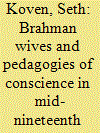

|
|
|
|
|
| Summary/Abstract |
This article argues that from circa 1845–1857, British colonial officials and administrators, abetted by Protestant missionaries and some so-called ‘native Christians’, attempted to replace Brahmanical regulation of everyday life with what I am calling ‘governance by conscience’ in British India. It uses the 1851 legal ruling in Narayen Ramchundur versus Luxmeebae, hailed by some for bringing ‘liberty of conscience’ and condemned by others as a wanton violation of Hindu personal law, to elucidate the connections between the Caste Disabilities Removal Act of 1850 (Act XXI) and education. My analysis highlights the centrality of Brahman wives and gender to debates about conscience, caste, property, and Christian conversion. During the violent summer of 1857, some condemned the Act and its use in deciding the case of Narayen Ramchundur versus Luxmeebae as provocation for the traumatic disorders then threatening to dismantle Britain's Indian empire.
|
|
|
|
|
|
|
|
|
|
|
|
|
|
|
|
| 3 |
ID:
143838
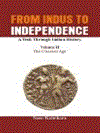

|
|
|
|
|
| Publication |
New Delhi, Vij Books India Pvt. Ltd., 2016.
|
| Description |
xx, 284p.hbk
|
| Contents |
Vol. II: Classical age
|
| Standard Number |
9789385563157
|
|
|
|
|
|
|
|
|
|
|
|
Copies: C:1/I:0,R:0,Q:0
Circulation
| Accession# | Call# | Current Location | Status | Policy | Location |
| 058481 | 954/KAI 058481 | Main | On Shelf | General | |
|
|
|
|
| 4 |
ID:
098098
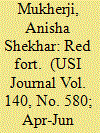

|
|
|
| 5 |
ID:
078476
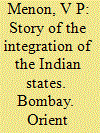

|
|
|
|
|
| Publication |
Bombay, Orient Longmans, 1961.
|
| Description |
489p.hbk
|
|
|
|
|
|
|
|
|
|
|
|
Copies: C:1/I:0,R:0,Q:0
Circulation
| Accession# | Call# | Current Location | Status | Policy | Location |
| 000174 | 954.04/MEN 000174 | Main | On Shelf | General | |
|
|
|
|